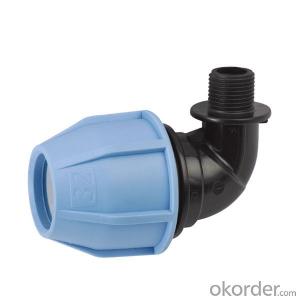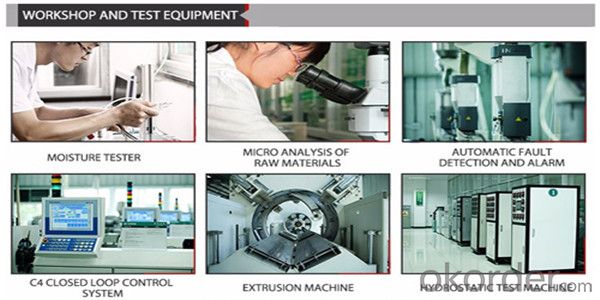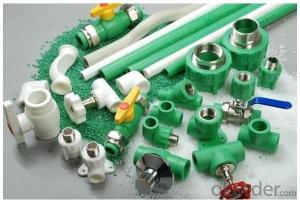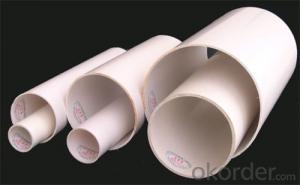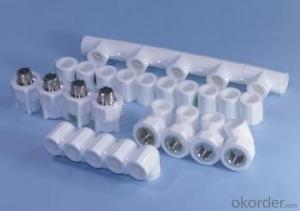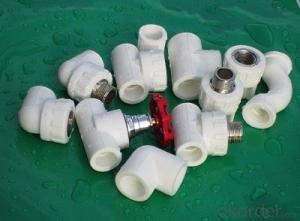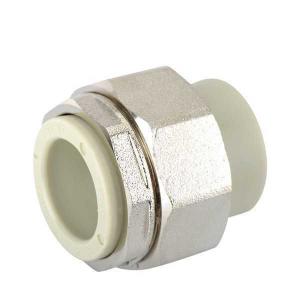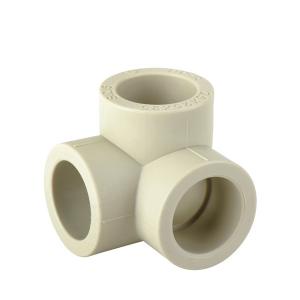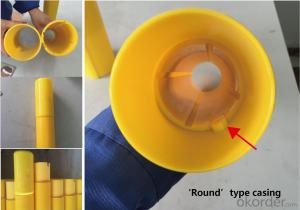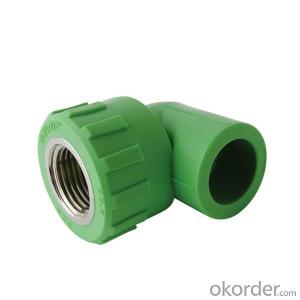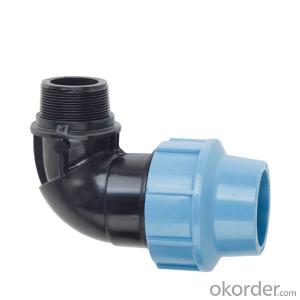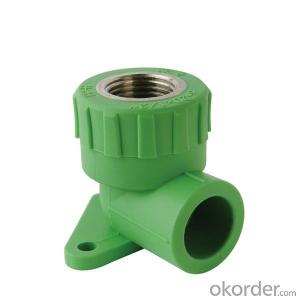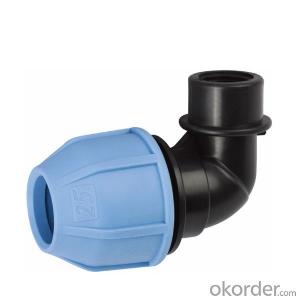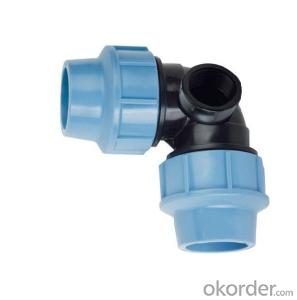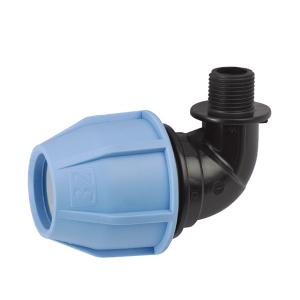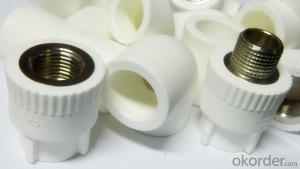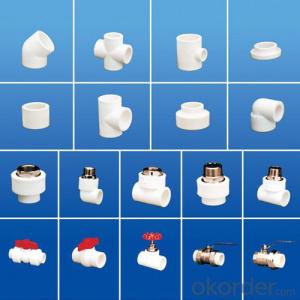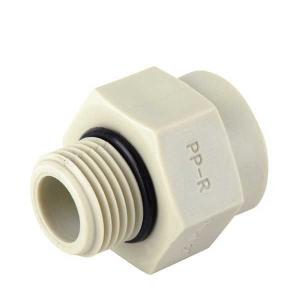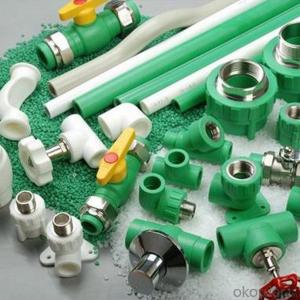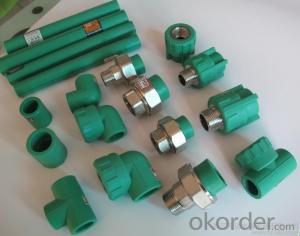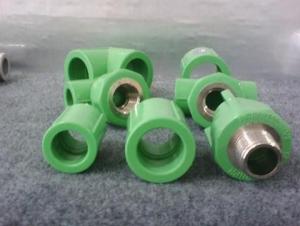Corrugated Plastic Pipe Fittings PP-R 90° Elbow with Threaded Male Take Off
- Loading Port:
- Ningbo
- Payment Terms:
- TT OR LC
- Min Order Qty:
- 1000 pc
- Supply Capability:
- 100000 pc/month
OKorder Service Pledge
OKorder Financial Service
You Might Also Like
Specification
Picture:
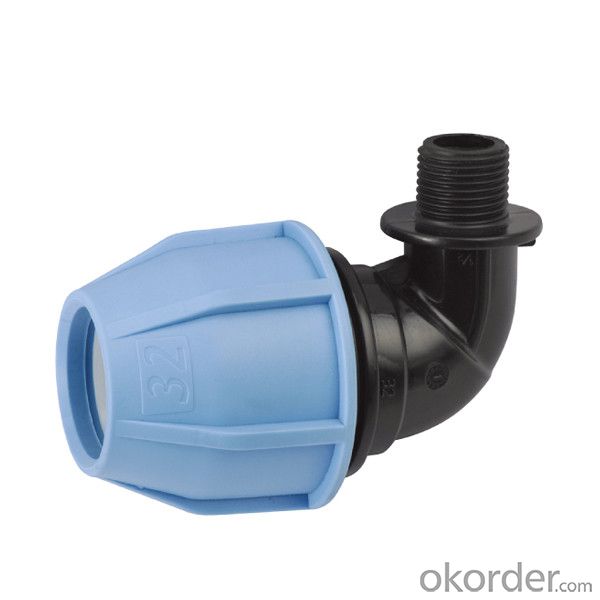
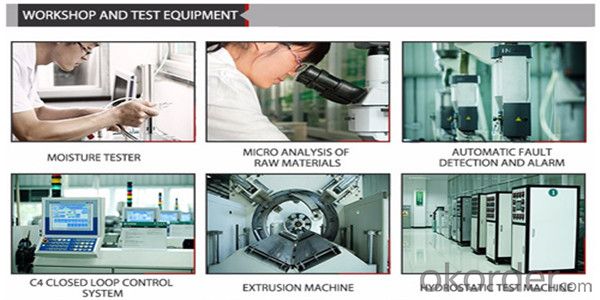
Product Applications:
Distribution for cool and hot water
Duct for drinkable water system
Pipes for kinds of high-temperature and low-temperature heating system
Pipes for heating and coolling settings in solar energy system
Connecting pipe for air conditioners
Main Product Features:
Large drum hub to maximize cable life
Self-activating automatic brake hold the load securely when crank handle is released
With cable or strap
Safety guard cover available
Top quality with competitive price
Widely used in the double beam bridge crane and gantry crane
Easy to install and high quality
Compact structure and reasonable design
Could be mounted on t he ground or wall!
Double drum!!
FAQ:
Q1:How Can I Get A Sample?
A1:You can get samples by communicate with our export sales.
Q2:How Long Is Delivery?
A2:Delivery time will be30-45days according to order quantity.
Q3:What Is The MOQ?
A3:MOQ depends on different items.
Q4:What Is Our Normal Payments Terms?
A4:Our normal payment terms now is: T/T, L/C or western union,paypal
- Q: How do plastic pipe fittings compare to cast iron fittings?
- Plastic pipe fittings and cast iron fittings have their own advantages and disadvantages. Plastic fittings are generally more cost-effective, lightweight, and easier to install as they require fewer tools and are less prone to corrosion. They also offer good resistance to chemicals and provide more flexibility in design options. On the other hand, cast iron fittings are known for their strength and durability, making them suitable for high-pressure and high-temperature applications. They also have better sound insulation properties and are less likely to expand or contract. Ultimately, the choice between plastic and cast iron fittings depends on the specific requirements of the plumbing system and the intended use.
- Q: What types of plastic pipe fittings are available?
- There are various types of plastic pipe fittings available, including couplings, elbows, tees, reducers, adapters, valves, and connectors. These fittings are designed to connect, redirect, or control the flow of fluid or gas through plastic pipes in plumbing, irrigation, and industrial applications.
- Q: Are plastic pipe fittings suitable for hot water applications?
- Yes, plastic pipe fittings can be suitable for hot water applications. However, it is important to choose the right type of plastic material that can withstand high temperatures. Some commonly used plastics for hot water applications include CPVC (chlorinated polyvinyl chloride) and PEX (cross-linked polyethylene). These materials are designed to be heat resistant and can effectively handle hot water without degrading or causing leaks. It is advisable to consult plumbing professionals or refer to manufacturer's guidelines to ensure the appropriate plastic pipe fittings are used for specific hot water systems.
- Q: What are the common shapes and configurations of plastic pipe fittings?
- Common shapes and configurations of plastic pipe fittings include elbows, tees, couplings, adapters, unions, reducers, caps, and plugs. These fittings are available in various sizes and are designed to connect and redirect pipes in plumbing and industrial systems.
- Q: Are plastic pipe fittings suitable for drinking water applications?
- Yes, plastic pipe fittings are suitable for drinking water applications. They are commonly used in plumbing systems for residential, commercial, and industrial settings. Plastic pipe fittings are durable, cost-effective, and resistant to corrosion, making them a reliable choice for delivering safe drinking water. Additionally, they are easy to install and maintain, which adds to their suitability for drinking water applications.
- Q: How do plastic pipe fittings handle high-velocity water flow?
- Plastic pipe fittings are designed to handle high-velocity water flow efficiently. They are typically made from durable materials such as PVC or CPVC, which have excellent resistance to pressure and flow. These fittings are engineered to provide a secure and tight connection, ensuring that they can withstand the force of high-velocity water without leaking or failing. Additionally, plastic fittings are corrosion-resistant, making them suitable for long-term use in high-velocity water flow applications.
- Q: Can plastic pipe fittings be used for food processing facilities?
- Yes, plastic pipe fittings can be used for food processing facilities, but it is important to ensure that the fittings are made from food-grade materials that comply with all relevant regulations and standards.
- Q: Can plastic pipe fittings be used in pharmaceutical systems?
- Plastic pipe fittings can be used in pharmaceutical systems, but it is important to ensure that the chosen fittings meet the specific requirements and regulations of the pharmaceutical industry. Factors such as material compatibility, cleanability, and resistance to chemicals should be thoroughly evaluated before selecting plastic pipe fittings for pharmaceutical applications.
- Q: Can plastic pipe fittings be used in greywater recycling systems?
- Yes, plastic pipe fittings can be used in greywater recycling systems. Plastic fittings are commonly used in these systems due to their durability, affordability, and resistance to corrosion. They are also easy to install and maintain, making them a popular choice for greywater recycling projects.
- Q: Can plastic pipe fittings be used for reverse osmosis systems?
- Yes, plastic pipe fittings can be used for reverse osmosis systems.
Send your message to us
Corrugated Plastic Pipe Fittings PP-R 90° Elbow with Threaded Male Take Off
- Loading Port:
- Ningbo
- Payment Terms:
- TT OR LC
- Min Order Qty:
- 1000 pc
- Supply Capability:
- 100000 pc/month
OKorder Service Pledge
OKorder Financial Service
Similar products
Hot products
Hot Searches
Related keywords
